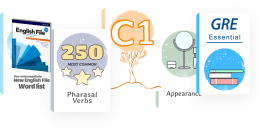The Letter I

"I" is the ninth letter and the third vowel letter of the modern English alphabet.
Vowels are sounds that are pronounced without any restriction in the vocal tract. It means we can produce it with the unrestricted flow of air.
Uppercase Form | I |
|---|---|
Lowercase | i |
Name | i (pronounced /ˈaɪ/) |
Common Sounds | /ɪ/, /i/, /aɪ/, /ə/, /ɜː/ |


The Letter I: Sounds
Vowels in the English language can have many many sounds. Here we will look at some of its common ones.
Common Sounds
Sound 1: /ɪ/
"i" mainly sounds /ɪ/, the short sound of "i:"
pig /pɪɡ/
insect /ˈɪnsekt/
lip /lɪp/
Sound 2: /i/
"i" also sounds /i/:
physique /fɪˈziːk/
taxi /ˈtæk.si/
machine /məˈʃiːn/
Sound 3: /aɪ/
"i" also sounds /aɪ/ when "i" stands between two consonants or occasionally at the beginning of words and before consonants:
child /tʃaɪld/
tiger /ˈtaɪɡər/
island /ˈaɪlənd/
Sound 4: /ə/
"i" sounds /ə/:
pupil /ˈpjuːpəl/
nostril /ˈnɑːstrəl/
basin /ˈbeɪsən/
Sound 5: /ɜː/
"i" sounds /ɜː/ between two consonants:
birth /bɜːrθ/
bird /bɜːrd/
shirt /ʃɜːrt/
Other Sounds
Sound 6: /j/
"i" also sounds /j/ in some cases:
onion /ˈʌnjən/
opinion /əˈpɪnjən/
The Letter I: Multigraphs
"i" can also appear with other letters (mainly vowels and sometimes consonants). They can create distinct vowels:
ie
"ie" commonly has two sounds:
/i/
/aɪ/
1. "ie" sounds /i/:
achieve /əˈtʃiːv/
brief /briːf/
cookie /ˈkʊki/
2. "i" after a consonant and before the vowel "e" sounds /aɪ/:
pie /paɪ/
tie /taɪ/
lie /laɪ/
Tip!
"ie" in the word friend sounds /ɛ/:
friend /fɹɛnd/
ai
"ai" commonly has four sounds:
/eɪ/
/ɛ/
/ə/
/ɪ/
1. "ai" sounds /eɪ/:
snail /sneɪl/
train /treɪn/
sail /seɪl/
2. "ai" also sounds /ɛ/:
again /əˈɡɛn/
said /sɛd/
against /əˈɡɛnst/
3. "ai" also sounds /ə/:
curtain /ˈkɝː.tən/
certain /ˈsɝː.tən/
4. "ai" sometimes sounds /ɪ/ in "ain" when it comes in the final syllable of a word:
bargain /ˈbɑːr.ɡɪn/
porcelain /ˈpɔːr.səl.ɪn/
air
"air" sounds /ɛɚ/:
chair /tʃɛɚ/
pair /pɛɚ/
fair /fɛɚ/
Tip!
"ai" sounds /aɪ/ in the word "bonsai:"
bonsai /ˌbɑːnˈsaɪ/
ei
"ei" commonly has two sounds:
/eɪ/
/iː/
1. "ei" mainly sounds /eɪ/:
veil /veɪl/
reign /reɪn/
rein /reɪn/
2. "ei" also sounds /iː/:
receive /rɪˈsiːv/
ceiling /ˈsiːlɪŋ/
receipt /rɪˈsiːt/
Tip!
Note that "ei" in the words "neither" and "either" sounds /iː/ in American English, while it sounds /aɪ/ in British English.
eigh
"eigh" sounds /eɪ/, in other words, "gh" is silent:
neighbor /ˈneɪbər/
eight /eɪt/
weight /weɪt/
Tip!
"eigh" in the word height sounds /aɪ/:
height /haɪt/
oi
"oi" commonly have two sounds:
/ɔɪ/
/ə/
1. "oi" sounds /ɔɪ/:
joint /dʒɔɪnt/
coin /kɔɪn/
toilet /ˈtɔɪ.lət/
2. "oi" also sounds /ə/:
tortoise /ˈtɔː.təs/
porpoise /ˈpɔː.pəs/
ui
"ui" commonly has two sounds:
/uː/
/ɪ/
1. "ui" together sounds /uː/:
fruit /fruːt/
juice /dʒuːs/
suit /suːt/
2. However, "ui" sometimes sounds /ɪ/:
biscuit /ˈbɪskɪt/
building /ˈbɪldɪŋ/
circuit /ˈsɜːkɪt/
ia
"ia" sounds /ə/:
special /ˈspeʃ.əl/
official /əˈfɪʃ.əl/
Egyptian /iˈdʒɪp.ʃən/
The Letter I: Uses
The letter "I" can be used as: the first-person singular nominative pronoun, but always in its capital form ➝ I
Comments
(0)